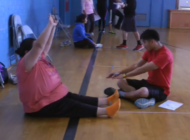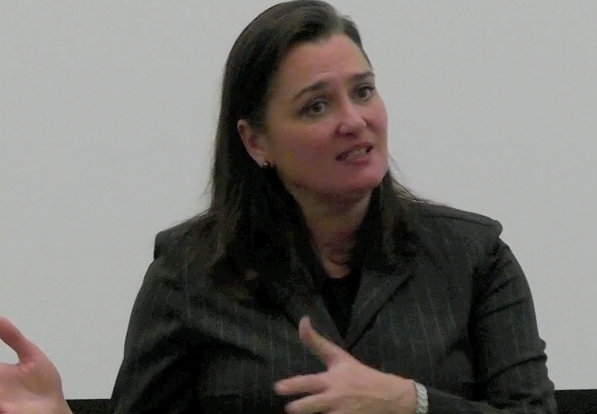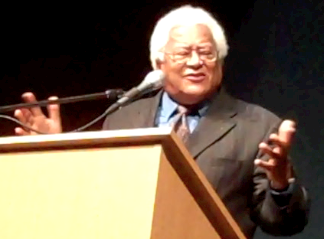As the pandemic continues to affect incarcerated folks, what resources are available?
By ISHRAT JAHAIARA QUAZI
EL NUEVO SOL
The ongoing pandemic has disproportionately affected incarcerated people due to the lack of resources provided in prison.
Before the pandemic, conversations were being had about the U.S. justice system and the excessive incarceration of people in the U.S., the majority of them being Black, Indigenous, and People of Color. The COVID-19 pandemic only made conditions worse and highlighted the unequal treatment of incarcerated folks.
“I don’t know if we can reform jails. I think they just need to get cut off, just remove them and start from the bottom up,” Maria Martinez, one of the student workers at Project Rebound, shared.
A report by the Prison Policy Initiative stated that before the pandemic, the federal Bureau of Prisons and around 9 state prison systems were operating at more than 100% capacity. The pandemic didn’t help bring that number down. Around 41 states are still operating at the same capacity.
Overcrowding in prisons is a result of the mass incarceration of BIPOC people in the United States. The Sentencing Project data reported that as of 2019, 2,185,008 people have been incarcerated in the U.S. As of 2014, for every 100,000 people imprisoned, 1,408 people were Black, 378 people were Hispanic and 275 people were white. The numbers are only growing.
In a pandemic that requires people to isolate and quarantine, prisons became more dangerous for incarcerated folks. Prisons are holding more people than they can, which means incarcerated people are forced to live together in a small dorm-like space which was already not the ideal living conditions for anyone.
Research done by the Journal of the American Medical Association reported in July 2020, that incarcerated folks were being affected by the coronavirus at a rate five times higher than the entire nation. As of April 27, the Marshall Project reports that around 396,265 people in prison have tested positive for the coronavirus.
It’s not just that people are being crammed into these horrible living conditions but, there also aren’t enough medical resources for incarcerated folks. Most incarcerated people have pre-existing medical conditions. With the lack of access to healthcare, abuse from the prison guards, and reduced resources during the pandemic, prisons are becoming more deadly than ever. Visitations and communication with incarcerated folks have become more difficult due to the pandemic.
“Because of COVID, people inside are not getting visits. That has been completely shut down and we know that’s really important for people inside, especially when you’re so isolated,” Lily Gonzalez, who leads Project Rebound with Johnny Czifra, shared.
Even with the limited resources, some programs are working to help incarcerated folks. Because of the pandemic, those programs are also having difficulty staying in communication with people in prison. One of these programs is Project Rebound. A version of this program exists in UC and CSU universities. They’re a state-funded program that helps incarcerated people in and after they leave prisons. The program was created by John Irwin in 1967. While being incarcerated, Irwin earned college credits and later went on to earn several degrees from UCLA and UC Berkeley. He wanted to create a resource that assists people better in prison so that they can have something once they get out.
“Prison wasn’t, it didn’t rehabilitate me it just made me become a better criminal.” Martinez explains, “Project Rebound, they help pay for books, they’ll assist you if you’re homeless. . . Not having that support a lot of people will go back and you know start using drugs again, start committing crimes,”
They said that Project Rebound is like a family and it’s a very crucial program for incarcerated folks as it provides all these resources to get rehabilitated back into society.
“The mission of Project Rebound is to support people that are currently and formerly incarcerated into matriculating into the university(CSUN),” Gonzalez explains the process, “We know that higher education enhances people’s life opportunities, so we wanna support people into coming to the university and accessing higher education because it’s not accessible.”
The program hires formerly incarcerated folks to provide opportunities in every way. It’s a very hands-on program as they make sure to walk incarcerated folks through every step of the way from getting transcripts to transferring to a university. However, that requires a lot of back-and-forth communication. The current pandemic has made communications slower.
“And, like not being able to get that mail quickly … I don’t get those till like maybe a month later you know … it’s really slow like the communication that’s a big problem like with people who are still incarcerated,” Martinez shared.
The United States prison complex is arguably one of the most inhumane systems in the world. The physical and mental conditions of incarcerated folks are in danger. The pandemic has created a mental health crisis in general. And, the L.A. County jail system is not at all equipped to handle people with mental health conditions.
While these programs don’t offer a holistic solution to incarceration, one of the resources available is the Forensic Inpatient Program (FIP) Step-down unit at the L.A. County Jail system. Craigen Armstrong and Adrian Berumen, who are a part of the program as mental health assistants at Twin Towers Correctional Facility, explains that the program encourages inmates to use resources available, provides mental health help, and makes sure that inmates are also taking their required medications.
“The information we provide is very valuable. Where there are 24 hours a day we live with them we see things that doctors or clinicians would never see,” Armstrong shared in a Heart Forward podcast with Kerry Morrison.
The lack of resources in prisons brings the questions of how the vaccines are being given to inmates. It is obvious that given the heightened risks in prisons, they should be receiving the vaccines as soon as it’s available.
However, an article published by Health Affairs shares that there isn’t enough data and tracking from the government of whether incarcerated folks are receiving vaccines and at what level they are. The report also shares that as of April 1, the Vera Institute of Justice says that around 137,074 incarcerated folks received at least one vaccine dose. That amount isn’t even close when you compare how many people were tested positive and how many incarcerated folks there are in all of the prisons in the U.S.
As of now, it’s unclear how prisons are going to move forward to get herd immunity and make sure that incarcerated folks are vaccinated.
Contact information of sources:
Maria Martinez, Project Rebound
maria.martinez.108@my.csun.edu
Lily Gonzalez, Project Rebound
Tags: incarceration Lily Gonzalez Maria Martinez northridge Project Rebound
















